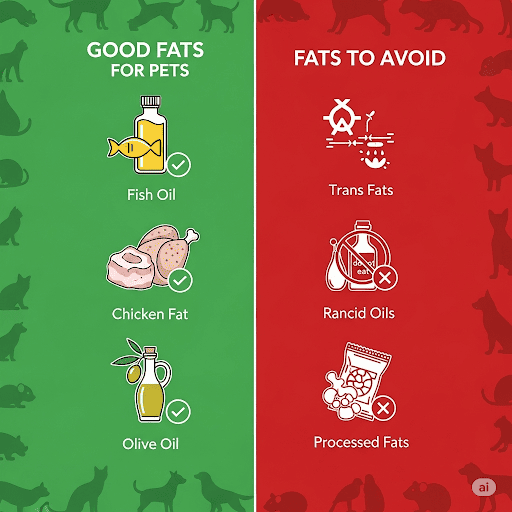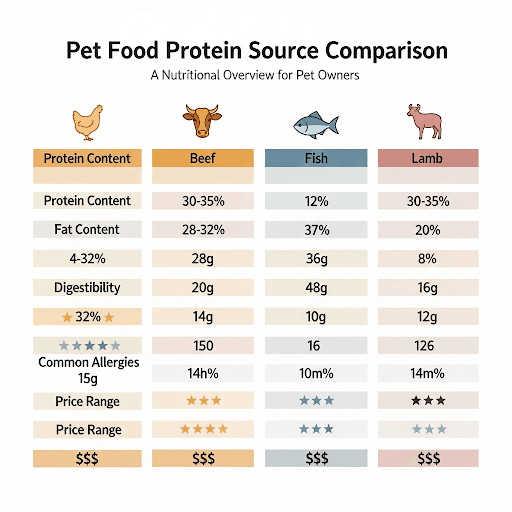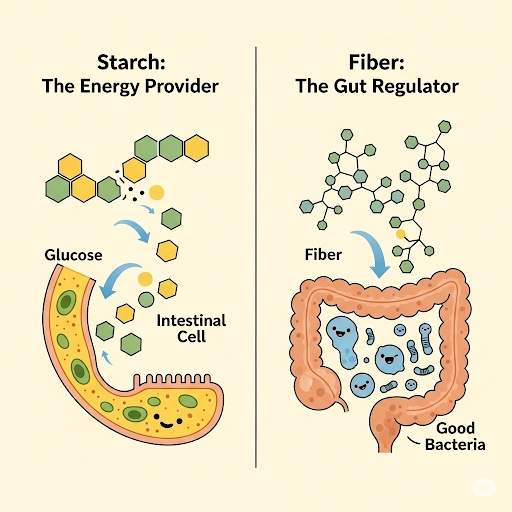Introduction
When you hear the word "fiber," you might think of it as simple "roughage" or a filler ingredient in pet food. It's often misunderstood, seen as just a tool to help with constipation. But what if I told you that dietary fiber is one of the most underrated, multi-talented nutrients in your pet's bowl? The function of fiber goes far beyond just keeping things moving. It's a powerhouse nutrient that fuels a healthy gut, helps manage weight, and even supports the immune system.
Let's debunk the "filler" myth and explore the fascinating world of fiber and the critical role it plays in your pet's overall well-being.
The Two Faces of Fiber: Soluble vs. Insoluble
Not all fiber is created equal. To truly understand its benefits, we need to distinguish between its two main types: soluble and insoluble. Most high-quality fiber in pet food contains a precise blend of both, as they perform very different, yet equally important, jobs.
-
Soluble Fiber: As the name suggests, this type of fiber dissolves in water to form a gel-like substance in the digestive tract. Think of it as the food for the good guys. This gel is fermented by the beneficial bacteria in your pet's colon (a process that makes it a prebiotic), producing short-chain fatty acids (SCFAs). These SCFAs are the primary energy source for the cells lining the colon and have anti-inflammatory properties. Common sources include beet pulp, psyllium husk, and chicory root.
-
Insoluble Fiber: This fiber does not dissolve in water. Instead, it acts like a tiny scrub brush, absorbing water as it moves through the intestines. This adds bulk to the stool, which helps promote and regulate normal bowel movements. It's incredibly effective at preventing constipation and can sometimes help with diarrhea by absorbing excess water in the gut. Cellulose is a common source of insoluble fiber you'll see on labels.
A healthy gut needs both types to function optimally—the insoluble fiber to keep the digestive "train" on schedule and the soluble fiber to feed the "workers" (the good bacteria) that maintain the tracks.
Beyond Digestion: Fiber's Surprising Health Benefits
The magic of fiber extends well beyond the gut. Its presence in a balanced diet can have a profound impact on your pet's overall health and vitality.
One of fiber's most significant roles is in weight management. Because it adds bulk and can slow down the emptying of the stomach, a fiber-rich diet helps pets feel fuller for longer. This sensation of satiety can prevent begging and reduce overall calorie intake without your pet feeling starved. Taking the guesswork out of portion sizes is exactly why a smart pet meal planner app can make life easier. The app can calculate the precise calories and nutrient blend, including the ideal fiber content, to help your dog or cat safely reach their target weight.
Furthermore, for pets with diabetes, soluble fiber is a hero. Its gel-like consistency slows down the absorption of glucose (sugar) from the intestines into the bloodstream, which helps prevent dangerous blood sugar spikes after meals. This contributes to better glycemic control, making it a cornerstone of nutritional management for diabetic dogs and cats.
Getting Fiber Right: How Much is Too Much?
While fiber is fantastic, this is not a case where "more is better." The goal is balance, not excess. A diet with too much fiber can interfere with the digestion and absorption of essential nutrients like proteins, vitamins, and minerals. It can also lead to unwanted side effects like gas, bloating, and loose stools.
The right amount of fiber depends on your pet's individual needs, including their age, weight, and any specific health conditions they may have. For example, a diet formulated for weight loss will typically have higher fiber levels than a standard adult maintenance diet. Always choose a food that is "complete and balanced" and formulated by veterinary nutritionists who understand these complex interactions. (For a deeper dive into what's in their bowl, read our article on How to Read Pet Food Labels.)
Soluble fiber forms a gel to feed good gut bacteria, while insoluble fiber adds bulk for digestive regularity.
Conclusion: Embrace the Power of Fiber
Fiber is far from being a simple filler. It's a complex carbohydrate with a profound impact on digestive health, weight control, and disease management. By feeding beneficial gut bacteria and ensuring digestive regularity, it forms the foundation of your pet's wellness from the inside out.
Next time you look at a pet food label, don't dismiss the ingredients that provide fiber. Instead, appreciate them for the powerful, health-promoting role they play. If you're unsure whether your pet is getting the right blend of nutrients for their specific needs, talk to your veterinarian and consider using a pet meal planner app to create a truly personalized and perfectly balanced diet.


